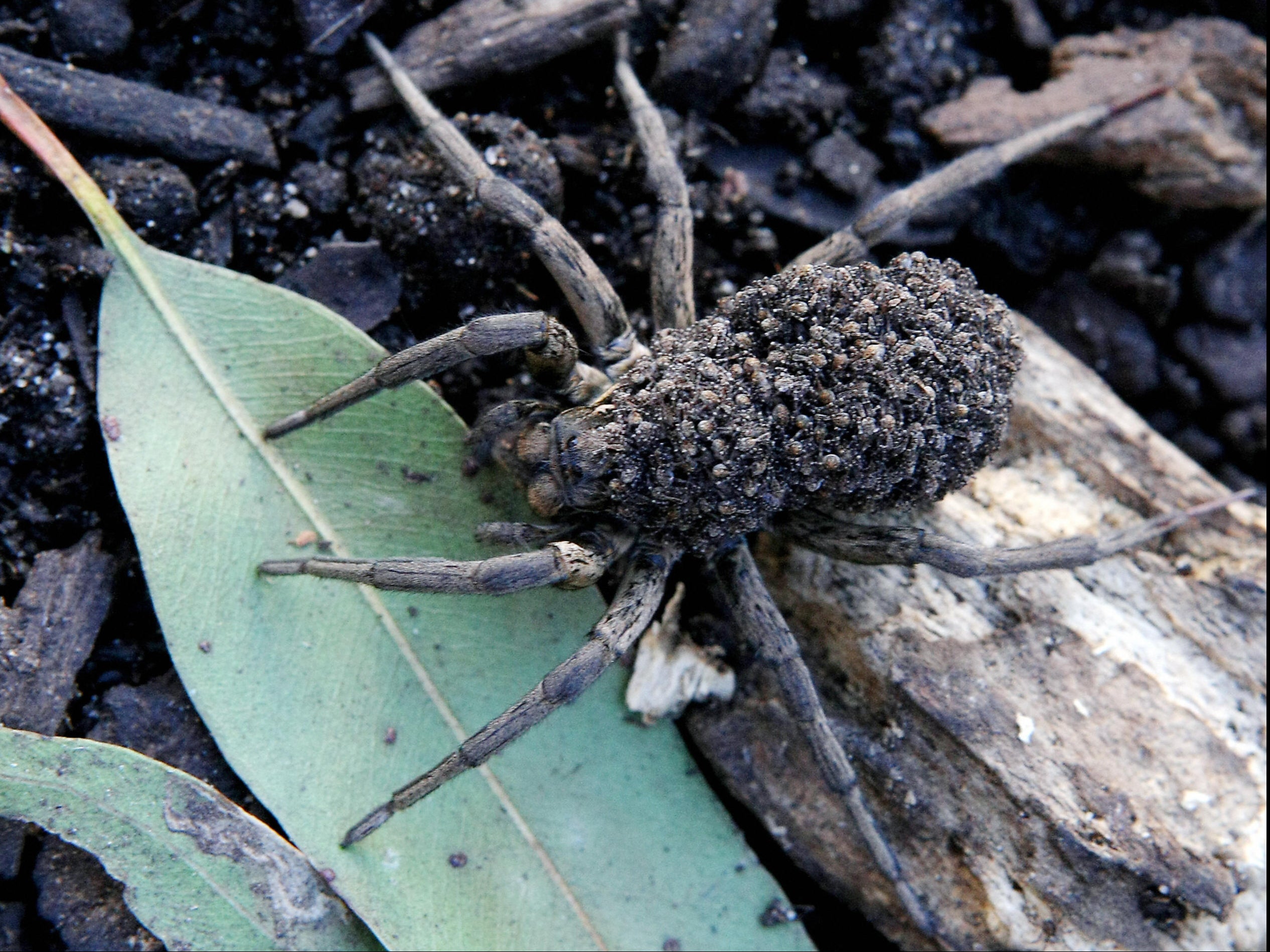Woman discovers massive wolf spider with hundreds of babies on its back in garden
Spine-tingling discovery made in New South Wales, Australia, while mowing the lawn

Your support helps us to tell the story
From reproductive rights to climate change to Big Tech, The Independent is on the ground when the story is developing. Whether it's investigating the financials of Elon Musk's pro-Trump PAC or producing our latest documentary, 'The A Word', which shines a light on the American women fighting for reproductive rights, we know how important it is to parse out the facts from the messaging.
At such a critical moment in US history, we need reporters on the ground. Your donation allows us to keep sending journalists to speak to both sides of the story.
The Independent is trusted by Americans across the entire political spectrum. And unlike many other quality news outlets, we choose not to lock Americans out of our reporting and analysis with paywalls. We believe quality journalism should be available to everyone, paid for by those who can afford it.
Your support makes all the difference.A woman mowing her lawn suffered a shock when she spotted a huge black spider lurking in the grass with hundreds of babies clinging to its back.
Jo Forbes took pictures of the arachnid in town of Cobargo in New South Wales, Australia, and uploaded it to the Facebook group “Australian spider identification page” to ask what species it was, according to News.com.au.
“I found this spider with lots of baby spiders on its back while I was mowing. I moved it out of harm’s way and then when I went back to take another photo, all the babies had gone,” she wrote in her post. “Please can someone ID it for me?”
Users on the forum were quick to identify it as a female wolf spider, one of the few species to carry its infants in this manner for protection.
“More specifically, Tasmanicosa sp from the Lycosidae family of wolf spiders,” one contributor clarified.
Read more:
While many of the amateur arachnologists viewing the post were delighted by the photographs, others admitted to being terrified.
“Damn that’s scary still - even without the 300 babies that could crawl all over me. Just made me shiver and wipe my arms,” one person wrote.
The wolf spider is understood to be venomous but not lethal and unlikely to represent a danger to humans unless provoked.
Amateur spider expert Ben Shoard posted a profile of the species in the same group in January, explaining that: “Wolf spiders are a widely distributed spider, with almost 2,500 described species spanning across multiple continents and almost 200 described species in Australia.
“Many of the species are very common, feeling quite at home in open lawns and gardens. At night, if using a head torch, it is possible to see the blue reflections of their eyes shining back at you. You may actually be surprised at the number of spiders there. The most reliable identifying feature for wolf spiders is their eyes.
“The top four eyes basically form a square when viewed from directly above, with two large eyes facing more or less directly forward and two sitting behind them. There are four eyes in the lower layer, which will vary a bit between species, sometimes forming a neat row at the front or being slightly split up and moved around the side.”
Mr Shoard notes that the species lives in round burrows and is renowned for its parenting skills: “The female will carry the egg sac around attached to its spinnerets. Once the spiderlings emerge from a neat hole in the sac, they will cling to their mother, picking up discarded food scraps while they develop into independent spiders.”
Join our commenting forum
Join thought-provoking conversations, follow other Independent readers and see their replies
Comments